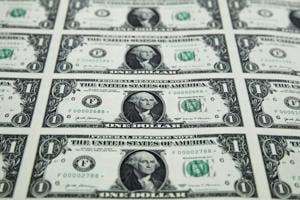The United States economy recorded a surprisingly robust rebound in the second quarter, expanding at an impressive 3% annual pace from April through June. This significant upturn provided a temporary reprieve following a challenging first-quarter performance, which had been notably impacted by global trade disruptions.
Analysis of the Commerce Department’s report indicates that a substantial drop in imports played a pivotal role in this growth surge. This decline, the most significant since the onset of the COVID-19 pandemic, contributed over five percentage points to the overall second-quarter expansion, demonstrating a complex interplay of global supply dynamics and domestic demand.
Despite the headline growth figure, consumer spending, a crucial driver of economic activity, registered a rather lackluster 1.4% growth rate. While this marked an improvement over the preceding quarter’s meager 0.5%, it suggests a cautious approach from consumers. Concurrently, private investment saw a substantial annual decline of 15.6%, the sharpest drop recorded since the initial economic shock of the pandemic.
Further examination of the data reveals that a significant drawdown in inventories, as businesses worked through goods stockpiled earlier in the year, notably shaved 3.2 percentage points off the second-quarter growth. Moreover, a key category within the GDP data, designed to measure the economy’s fundamental health, weakened considerably. This metric, which excludes volatile components like exports and government spending, expanded at a mere 1.2% annual pace, marking its weakest performance since late 2022 and down from 1.9% in the first quarter.
Adding to the complexities, federal government spending and investment continued their downward trend, falling at a 3.7% annual rate in the second quarter, building upon a 4.6% drop observed in the first three months of the year. This consistent decline in public sector contributions highlights an ongoing shift in fiscal dynamics.
Positively, the latest GDP report indicated a welcome easing of inflationary pressures during the second quarter. The Federal Reserve’s preferred inflation gauge, the personal consumption expenditures (PCE) price index, increased at an annual rate of 2.1%, a notable reduction from the first quarter’s 3.7%. Core PCE inflation, which excludes volatile food and energy prices, also showed improvement, dropping to 2.5% from 3.5%.
However, the detailed findings within the report suggest that both U.S. and international businesses remain cautious, primarily due to the persistent economic uncertainty stemming from the Trump administration’s radical strategy to restructure the American economy. This strategy, characterized by the imposition of substantial tariffs on a wide array of imported goods, aimed to protect domestic industries and encourage reshoring of manufacturing.
The administration’s stance on tariffs was framed as a method to fortify American industries, incentivize the return of manufacturing jobs to the United States, and contribute to funding the extensive tax cuts enacted previously. Yet, the long-term economic ramifications and the ongoing global trade tensions continue to cast a shadow of uncertainty over future growth trajectories, prompting a wait-and-see approach from various economic actors.






Leave a Reply